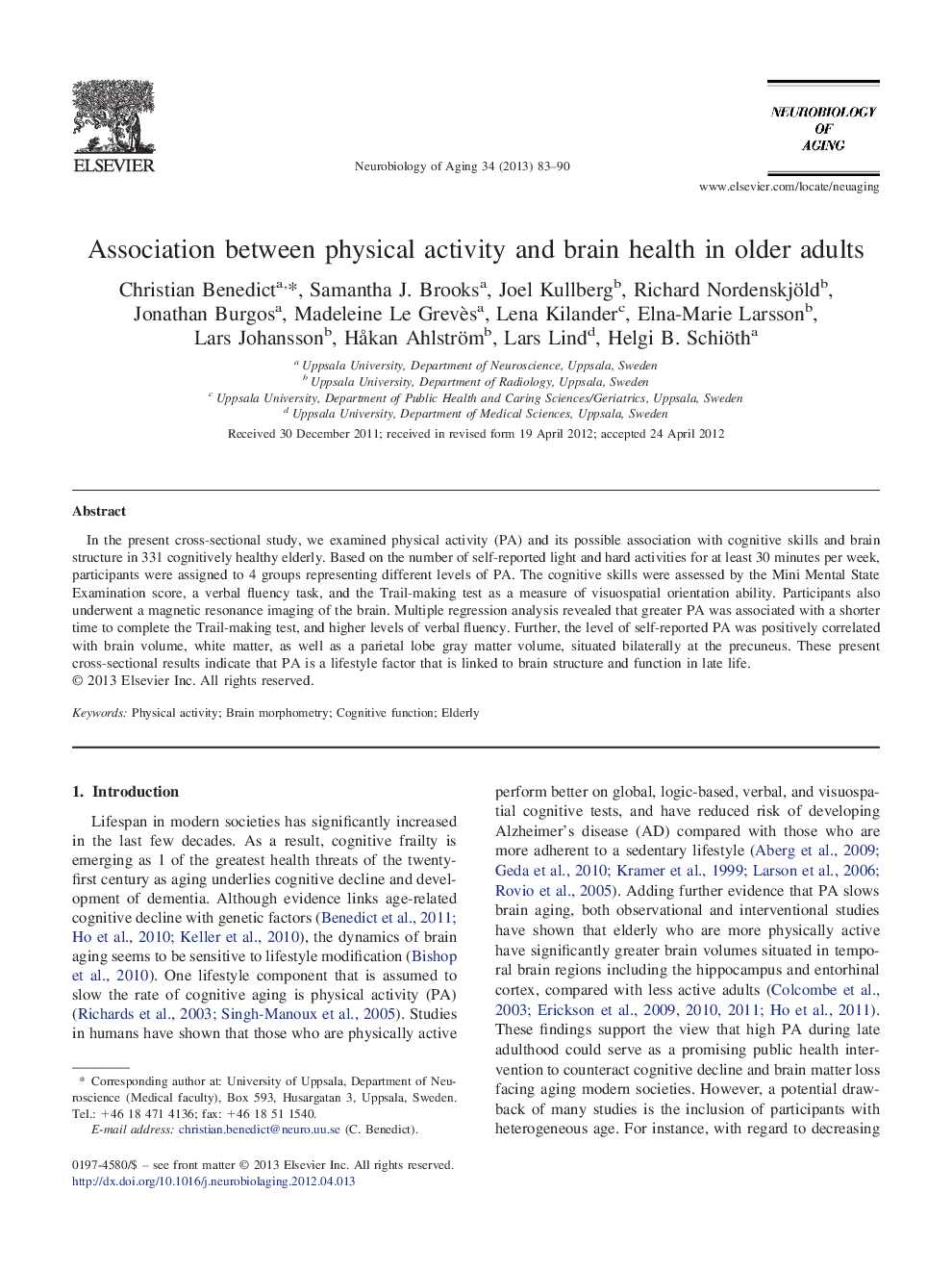| Article ID | Journal | Published Year | Pages | File Type |
|---|---|---|---|---|
| 6807882 | Neurobiology of Aging | 2013 | 8 Pages |
Abstract
In the present cross-sectional study, we examined physical activity (PA) and its possible association with cognitive skills and brain structure in 331 cognitively healthy elderly. Based on the number of self-reported light and hard activities for at least 30 minutes per week, participants were assigned to 4 groups representing different levels of PA. The cognitive skills were assessed by the Mini Mental State Examination score, a verbal fluency task, and the Trail-making test as a measure of visuospatial orientation ability. Participants also underwent a magnetic resonance imaging of the brain. Multiple regression analysis revealed that greater PA was associated with a shorter time to complete the Trail-making test, and higher levels of verbal fluency. Further, the level of self-reported PA was positively correlated with brain volume, white matter, as well as a parietal lobe gray matter volume, situated bilaterally at the precuneus. These present cross-sectional results indicate that PA is a lifestyle factor that is linked to brain structure and function in late life.
Related Topics
Life Sciences
Biochemistry, Genetics and Molecular Biology
Ageing
Authors
Christian Benedict, Samantha J. Brooks, Joel Kullberg, Richard Nordenskjöld, Jonathan Burgos, Madeleine Le Grevès, Lena Kilander, Elna-Marie Larsson, Lars Johansson, HÃ¥kan Ahlström, Lars Lind, Helgi B. Schiöth,
